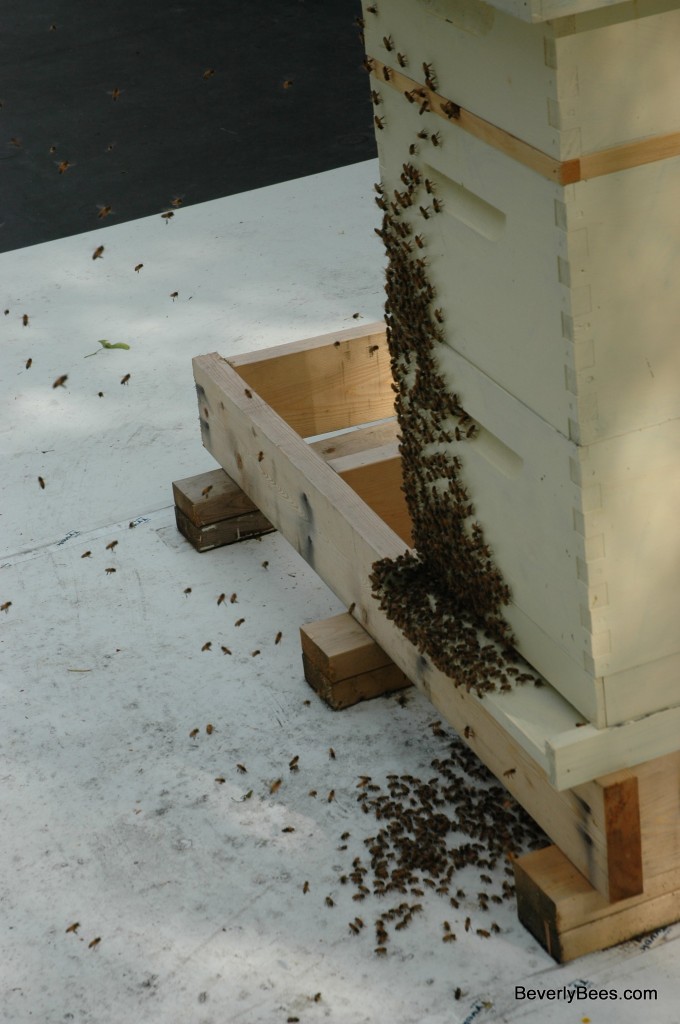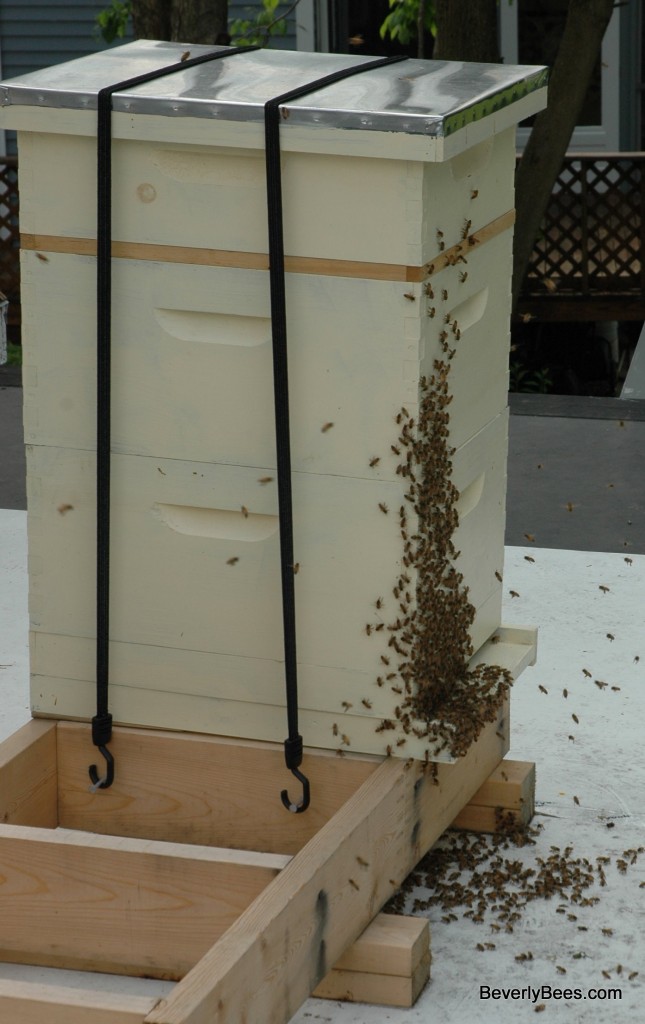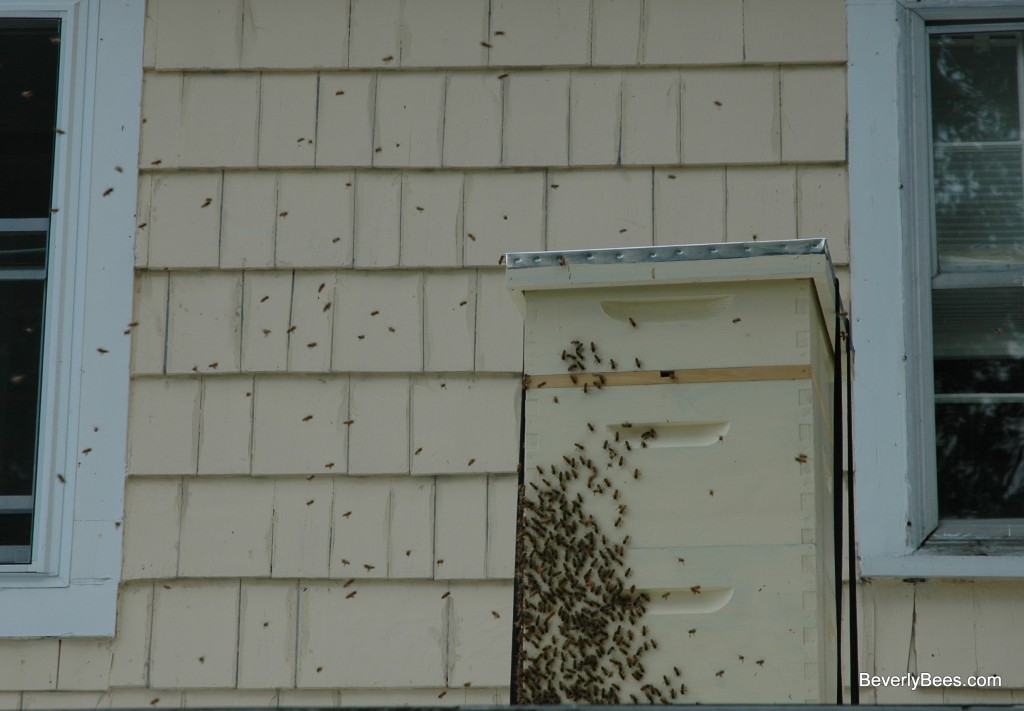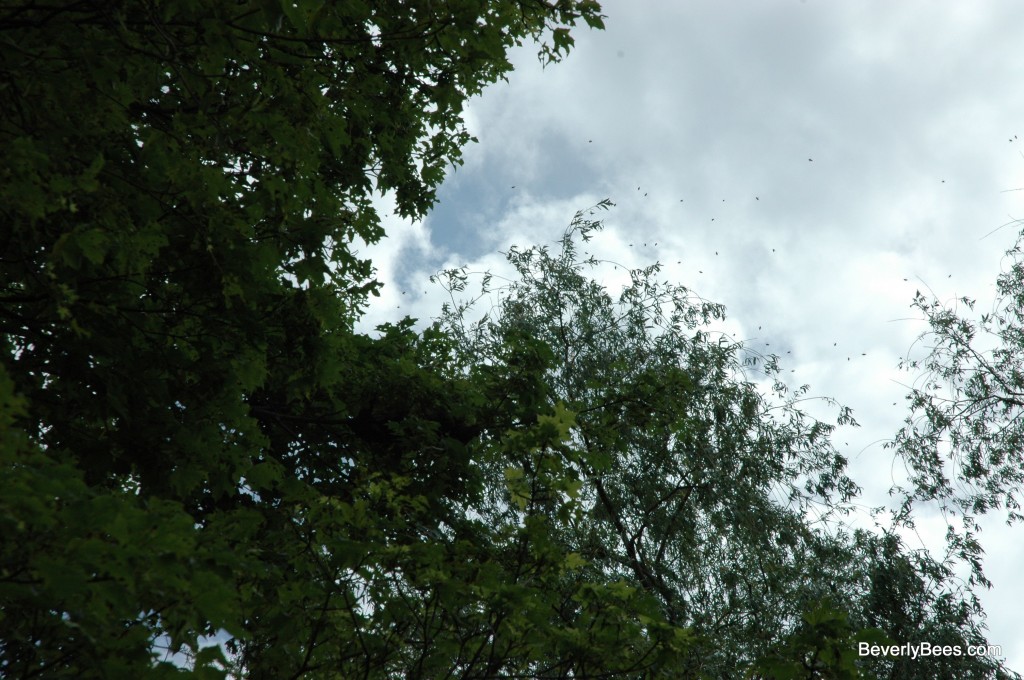One of the unavoidable, exciting and sometimes depressing aspects of beekeeping is swarming.
Bee Swarm – this word draws great fear in some circles, as we have all heard horror stories of killer bee swarms that have relentlessly attacked people leaving fatal injuries. While bees can be aggressive defending their hive from perceived attackers, when they swarm without provocation, honey bee swarms are almost always very docile. Swarming is the bee’s way of splitting the colony and reproducing to increase their numbers of hives. They initiate this behavior by building many queen cells, in the original hive, in order to raise new queens. Then after a certain point in the baby queen bees’ development, some worker bees leave the hive and fly off with either the original or the newly hatched queen to find another home. Usually swarming is a sign of a strong colony, with a large number of bees, that will benefit greatly by splitting up. Sometimes, as was the case for my hive, a swarm may come from a struggling colony and can lead to certain death from too low of a population of bees.
I installed my first ever bee package on April 15th, 2011. On May 31st, 2011 they superseded or killed off their queen. I was not too worried because there were plenty of queen cells and I took it as a learning experience on queen replacement. But as I was watching my hive on June 9th, 2011, all the sudden, I saw thousands of bees exit in a big, black, buzzing ball and fly high up into the sky. My heart skipped a beat as I watched everything I worked so hard for the past few months, get up and leave. But then, just as quickly as they left, the bees turned around and flew back into the hive.

At this point, it should have dawned on me that there was a problem, but being a new beekeeper mistakes are only things you can learn from.
June 10th, 2011, 9 AM – I watched again as all the bees left the hive swirling in one big buzzing mass encircling the sky. I watched as they flew to the tippy top of a pine tree in my side yard and I watched as 20 minutes later they once again returned to the hive.
June 10th, 10:30 AM – A third attempt was made by the bees, a smaller number left the hive this time, flew in a buzzing mass towards the sky and just as quickly returned home.
Now I was curious, I set up the ladder and went up on the roof to take a look. There clustered on the ground in front of the hive was a small mass of bees. As I watched the cluster on the ground get smaller and return to the hive, I spotted the queen out there crawling on the ground. Now the queen never leaves the hive under normal conditions, but as I would soon find out, these were not normal conditions. The worker bees seemed to be attacking their queen as they repeatedly jumped on top of her. She was running as fast as she could, scurrying this way and that, to get away from them. I needed help from the big guns, so I called my wonderful mentor Stan. Understanding the urgency of the situation, he came right over.

By the time he got here all the bees had returned to the hive again. We decided to take a look and see what was going on inside the hive. We opened it up and lo and behold we counted seven capped queen cells. Not only that, we saw one had been squished and was dead, probably from a new beekeeper carelessly putting away the frames (now who could that be I wonder), and one and only one cell had been chewed open. We also noticed that all the empty comb was filled with nectar, leaving no place for the new queen to lay eggs. We saw the new queen there too, the one that had been on the ground. She was small and probably had just recently emerged. We put the hive back together not knowing what to expect. We assumed they would not try to swarm again after three unsuccessful attempts.

We were wrong. Bees have their own ideas on what they want to do. It was only a few hours after Stan left, that I watched with sadness, as my bees exited their hive in a big, buzzing, whirling, black ball of swarm and flew high up into the sky. This time it was different. This time the queen had gone with them. I watched as they flew towards my backyard and then towards the ground. I ran outside to see where they were going, knowing if they landed somewhere accessible I could get them back.
To my dismay, they left the ground and flew back high into the air and finally settled on a branch 80 feet above my head. After a few unsuccessful attempts of trying to reach the branch they were clustered on with a ladder and a pole saw, I sadly waved goodbye and wished them well. I knew then, my first few weeks after becoming a beekeeper, the chance that the rest of my bees from this package would survive was tenuous at best. This could signal the beginning of the end for my colony.

To find out what happened to my bees click here to read Part 2 .
Other Posts You May Enjoy:
- Planting A Bee Friendly Garden
- Duct Tape, A Rock And A String Saved My Swarm – Part 2 of 3
- Bring Out Yer Dead – The Undertaker Bees
- I Want Candy! So Let’s Make A Candyboard For Winter Feeding
- A Hive With Two Queens
This post was linked to Farmgirl Friday
